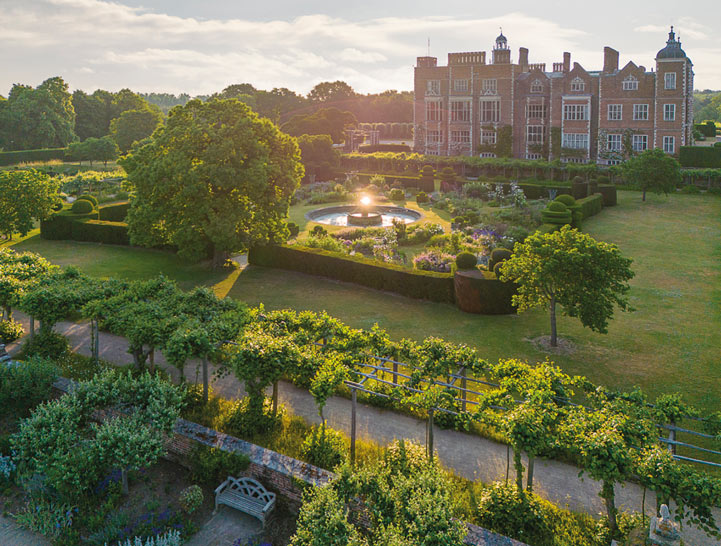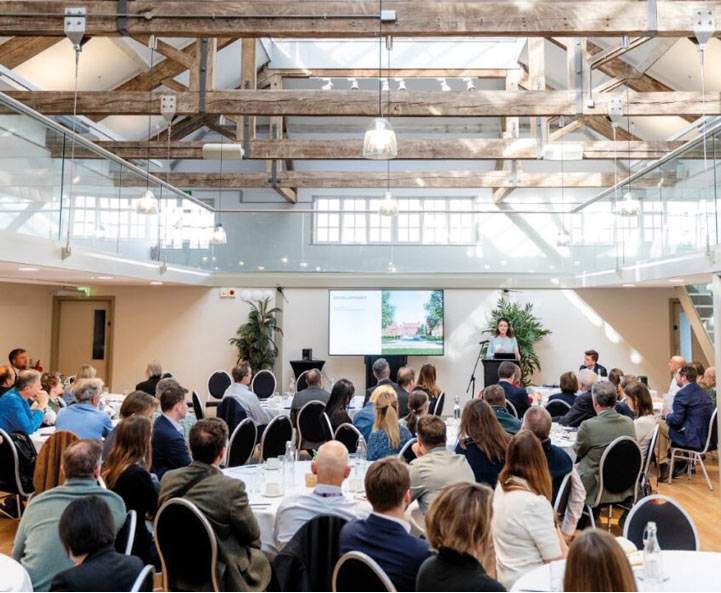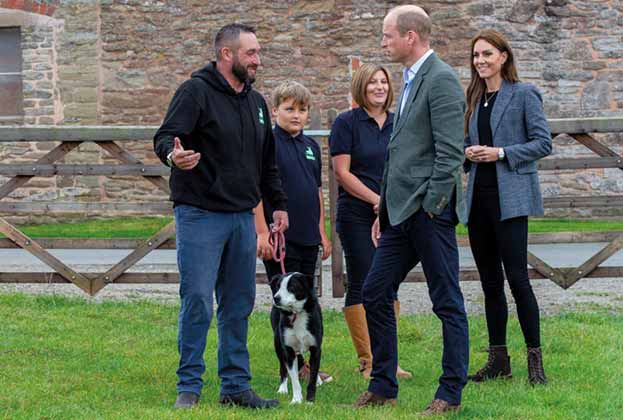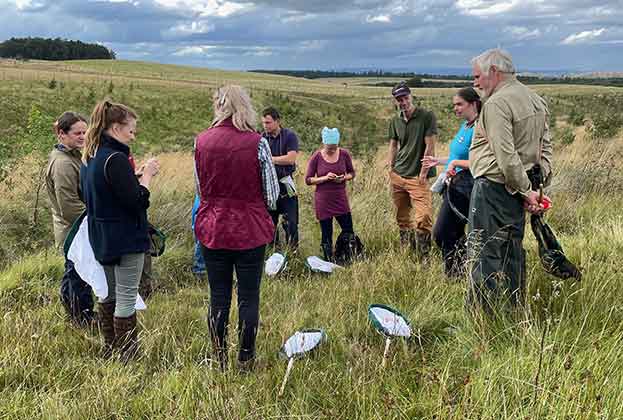An approach that brings tangible outcomes and solutions to the whole community
Hatfield Park is a diverse rural estate and has been the home of the Cecil family since the early 17th century. The Jacobean house and formal gardens are surrounded by around 80 hectares of historic parkland, providing the heart to an estate that encompasses more extensive farmland, woodland, and residential and commercial properties on the edge of Hatfield, Hertfordshire. The houses range from period farmhouses and cottages through to newly built townhouses and flats, with the commercial properties including a variety of office premises as well as retail, workshops and storage units.
The estate holds great historical and cultural significance. Part of the Bishops Palace, built in 1497, still stands and was the childhood home of Queen Elizabeth I. Today, the house, gardens, historic park, on-site dining and boutique shops are a popular destination for the local community and visitors from further afield.

Where the city meets the countryside
Although Hatfield Park is a working rural estate, there is a strong urban influence due to its location in the town of Hatfield. It is 20 minutes by rail from central London and an estimated four million people live within 40 minutes of the estate. This brings both opportunities and challenges, which have influenced actions to future-proof the estate to benefit the people who live and work there, the local and wider community, historians, tourists and other national and international stakeholders.
A social value vision – putting people and the environment first
In recent years Hatfield Park has spoken of its vision encompassing social value “to grow lasting commercial and social value for the communities we serve”. While many estates have long delivered elements of social value, it is critical to better communicate what this means in today’s world. Rather than being seen as a historical curiosity, it is important that the estate looks to the future and demonstrates how activities and actions reflect a longstanding commitment to communities, the environment and genuine sustainability. The estate recognises that the actions of the business has an ability to impact many stakeholders including residential and commercial tenants, partners, local residents and the wider community, reflecting the importance of the Savills four pillars of people (see figure 1).
Rediscovering historic values
Hatfield Park’s long history and diverse interests mean that it is intrinsically linked to the local town and community. In times of constant and rapid change, the estate is often seen as a constant, a touchpoint that can be relied upon for a positive, consistent and long-term approach.
What does social value mean for Hatfield Park estate?
The estate management team at Hatfield Park take great pride in how they execute projects and undertake their ongoing management responsibilities. There is a clear and consistent approach to ensure that company goals are understood and how they relate to the aim of growing lasting social and commercial value. The five company goals, to achieve sustainable profits, build vibrant communities, ensure positive environmental impacts, while remaining simple to operate with a happy team will assist the estate’s success in this. Everything the team undertakes at Hatfield Park is essentially driving one or more of these goals. Figure 3, below, illustrates the social impact of the estate.
Good profits come from looking after properties and spaces responsibly, ethically, and sustainably, providing great places to live, work and relax
Katie Stein, Senior Rural Researcher, Rural Research
Financials are important too
Conservation work, whether in the built or natural environment, and broader educational or community benefits can only be provided if the estate makes a satisfactory profit. Hatfield Park Estate aims to make sustainable profits by deriving revenue from running the business well and in a way that the estate is proud of. Good profits come from looking after properties and spaces responsibly, ethically and sustainably, providing great places to live, work and relax. Sustainable profits allow Hatfield Park Estate to continue to invest in its buildings, its historic landscapes, its people and the local community into the future.
What is a charrette and how does it work?
In 2008, the estate adopted an initiative called a charrette to facilitate this. The word charrette is derived from old French to describe how students of architecture were invited to voice their ideas. Charrettes have been used over the years at Hatfield Park to enable the estate to listen to the voice of the local planners, businesses and residents through public workshops and discussions. It provides an open forum in which the estate and community can consider new ideas, explore different views and seek to establish consensus. Greater collaboration, the early sharing of ideas and complete openness within such forums can deliver tangible benefits both in building and maintaining relationships and shaping future policy direction. Hatfield Park’s experience of the charrette process suggests that such events can prove a powerful tool in increasing collaboration between different sectors of the community and delivering effective solutions.
SOCIAL VALUE

Social value brings positive outcomes for the estate and increasingly people beyond its boundary by:
- Delivering social and environmental benefits
- Ensuring good business practice
- Providing transparency and engagement at all levels
- Ensuring that the estate is at the heart of a wider dialogue, shaping opinion and remaining relevant to local communities
- Helping ensure the estate is up to date and in line with public opinion
- Providing leadership on local issues
DELIVERING SOCIAL VALUE AT HATFIELD PARK ESTATE
The estate considers social value under four broad themes:
- Built environment
- Natural environment
- Education
- Leadership.
The estate engages with the community in a variety of ways, including a series of popular and well-supported charrettes.
Read the articles within Spotlight: Social value in a rural context below.
.jpg)


